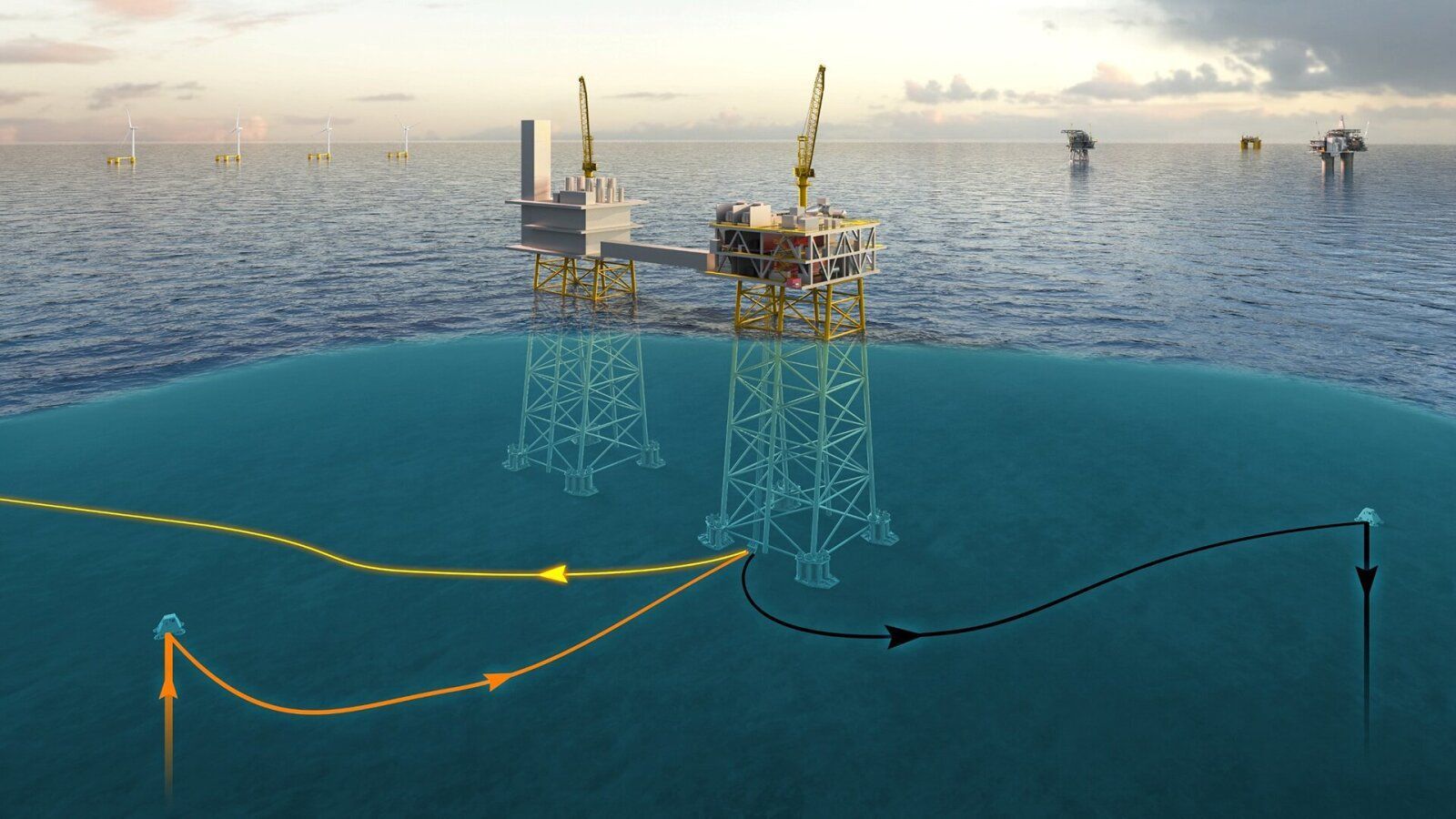March 4, 2021
Houston, TX, March 4, 2021 —Schlumberger New Energy, Chevron Corporation, Microsoft and Clean Energy Systems today announced plans to develop a ground-breaking bioenergy with carbon capture and sequestration (BECCS) project designed to produce carbon negative power in Mendota, California. The BECCS plant will convert agricultural waste biomass, such as almond trees, into a renewable synthesis gas that will be mixed with oxygen in a combustor to generate electricity. More than 99% of the carbon from the BECCS process is expected to be captured for permanent storage by injecting carbon dioxide (CO2) underground into nearby deep geologic formations. By using biomass fuel that consumes CO2 over its lifetime to produce power and then safely and permanently storing the produced CO2, the process is designed to result in net-negative carbon emissions, effectively removing greenhouse gas from the atmosphere. The plant, when completed, is expected to remove about 300,000 tons of CO2 annually, which is equivalent to the emissions from electricity use of more than 65,000 U.S. homes. “We are excited to welcome Chevron and Microsoft on this exciting opportunity, as it further demonstrates how we play an enabling role to deploy carbon capture and sequestration solutions at scale,” said Ashok Belani, Schlumberger New Energy executive vice president. “We are diversifying our portfolio of projects with partnerships in selected markets and geographies where existing policies and regulations can make projects attractive today. This unique BECCS project in California is a game-changing example of this.” "There's tremendous opportunity to use cloud technologies in the energy sector to help accelerate the industry's digital transformation," said Scott Guthrie, executive vice president, Cloud + AI, Microsoft. "Innovation at this scale is accelerated by our strong relationship, as we work together to help provide a sustainable and clean environment for local communities." “We’re pleased to have strong partners join our efforts to address the challenges of climate change, improve air quality in the Central Valley and make a vital contribution to the local economy by restarting an idled biomass plant,” said Keith Pronske, Clean Energy Systems president and CEO. “Chevron is helping to advance a lower-carbon future,” said Bruce Niemeyer, Chevron's vice president of strategy and sustainability. “We look forward to leveraging our experience working in California, building projects which can be repeated, and operating large-scale carbon capture and storage operations. The project is aligned with our focus on investments in low-carbon technology to enable commercial solutions.” The completed facility will help improve air quality in the Central Valley by using approximately 200,000 tons of agricultural waste annually, in line with the recent California Air Resources Control Board plan to begin phasing out almost all agricultural burning in the Valley by 2025. The bioenergy technology is designed to operate without routine emissions of nitrous oxide, carbon monoxide and particulates from combustion produced by conventional biomass plants. The project is expected to create up to 300 construction jobs and about 30 permanent jobs once the facility is operating. The companies involved expect to begin front end engineering and design immediately, leading to a final investment decision in 2022, and will then evaluate other opportunities to scale this carbon capture and sequestration solution. About Schlumberger New Energy Schlumberger is the world's leading provider of technology to the global energy industry. Schlumberger New Energy explores new avenues of growth by leveraging Schlumberger’s intellectual and business capital in emerging new energy markets, with a focus on low-carbon and carbon-neutral energy technologies. Its activities include ventures in the domains of hydrogen, lithium, carbon capture and sequestration, geothermal power and geoenergy for heating and cooling buildings. www.slb.com About Chevron Chevron Corporation is one of the world’s leading integrated energy companies. Through its subsidiaries that conduct business worldwide, the company is involved in virtually every facet of the energy industry. Chevron explores for, produces and transports crude oil and natural gas; refines, markets and distributes transportation fuels and lubricants; manufactures and sells petrochemicals and additives; generates power; and develops and deploys technologies that enhance business value in every aspect of the company’s operations. Chevron is based in San Ramon, Calif. More information about Chevron is available at www.chevron.com . About Clean Energy Systems Clean Energy Systems is a global leader in the development and deployment of carbon reducing energy systems. The company has successfully transitioned proven, reliable rocket engine combustion principles into a flexible and economically attractive power generation system for the benefit of our planet. CES’ proprietary oxy-combustion technologies enable cleaner and more efficient co-generation of power, steam, water, and captured CO2 and offers the world a new perspective on the way we assess the value of natural resources. ### Cautionary Statement Regarding Forward-Looking Statements This press release contains “forward-looking statements” within the meaning of the U.S. federal securities laws — that is, statements about the future, not about past events. Such statements often contain words such as “expect,” “may,” “believe,” “plan,” “estimate,” “intend,” “anticipate,” “should,” “could,” “will,” “likely,” “goal,” and other similar words. Forward-looking statements address matters that are, to varying degrees, uncertain, such as net-negative carbon emissions goals, air quality improvement, job creation and other forecasts or expectations regarding global climate change. These statements are subject to risks and uncertainties, including, but not limited to, the inability to achieve net-negative carbon emissions goals; the inability to recognize intended benefits of the partnership; legislative and regulatory initiatives addressing environmental concerns, including initiatives addressing the impact of global climate change; and other risks and uncertainties detailed in the companies’ public filings, including Schlumberger’s most recent Forms 10-K, 10-Q and 8-K filed with or furnished to the U.S. Securities and Exchange Commission. If one or more of these or other risks or uncertainties materialize (or the consequences of such a development changes), or should underlying assumptions prove incorrect, actual outcomes may vary materially from those reflected in our forward-looking statements. The forward-looking statements speak only as of the date of this press release, the parties disclaim any intention or obligation to update publicly or revise such statements, whether as a result of new information, future events or otherwise. For further information, contact: Media Giles Powell – Director of Corporate Communication, Schlumberger Limited communication@slb.com Sean Comey, Chevron Tel: +1-925-842-5509 Investors Ndubuisi Maduemezia – Vice President of Investor Relations, Schlumberger Limited Joy V. Domingo – Director of Investor Relations, Schlumberger Limited Tel: +1 (713) 375-3535 investor-relations@slb.com





